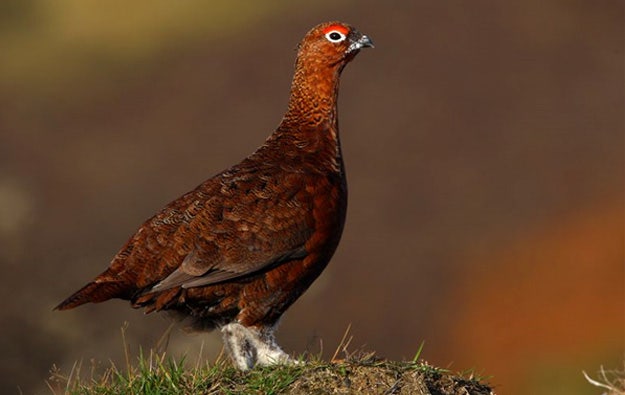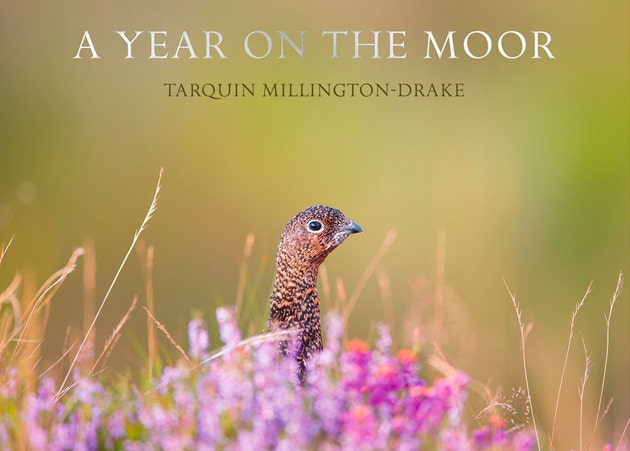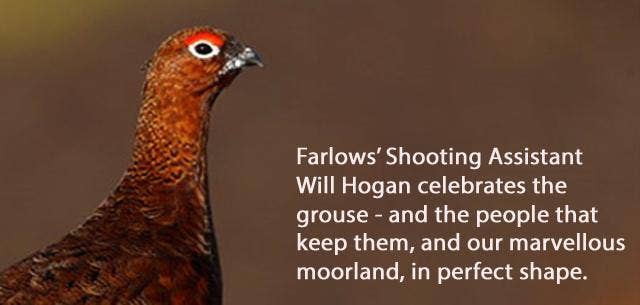Our game season starts today (12th August) with what is regarded as the king of our game birds, the Red Grouse (Lagopus lagopus scoticus) and whether it be driven or walked up there is no better word to describe these birds than ‘majestic’.
 The majestic Red Grouse, a lot of work goes into keeping them, and our precious moorland, in perfect condition.
The majestic Red Grouse, a lot of work goes into keeping them, and our precious moorland, in perfect condition.For me, last season seems like it was only yesterday and I wonder what has been happening on the estates around the UK in our absence? Well, in our time away from the field these birds have been busy and because grouse are of solely wild stock they have had their young and are already developing into the sporting birds that those lucky enough to see will be pitting their skills against this season. And let’s not forget the stewards of the countryside, the gamekeepers, who have been working tirelessly throughout the off season, helping the grouse to have their clutches of chicks in peace and with as little predation as possible.
So, for this piece I’m going to take a short look at some of the behind the scenes work that is carried out by these oft-forgotten countryside ambassadors.
Pest and predator control
Grouse face many hurdles to have a brood of chicks successfully. Small predators such as rats and stoats will actively hunt down the eggs and small chicks of the grouse and this means that trapping lines for stoats, weasels and rats are essential. But it’s not only these predators; trapping of the crows and magpies, the main aerial threats, is also paramount as these birds will happily take grouse eggs and even kill the young chicks. Killing off these potential threats not only benefits the grouse as British moorland is a unique landscape and home to many rare wading birds which also benefit from the work of the estates’ gamekeepers.
Heather burning
This is where the keepers burn off old and degenerate heather to encourage the new growth of fresh shoots which are also essential for the grouse to survive. If it wasn’t for this burning the food sources for grouse would dwindle and so impact on numbers, which obviously would have an impact on the availability of birds for shooting.
The burning is not a random process though, the moorland is managed in sequence to give a diverse range of structure with burned areas of heather to encourage new shoots and older areas to provide cover – but not too much cover - as the heather shouldn’t be too high to prevent the grouse peeping above it to look for danger. Without burning the relentless onward sweep of ‘nature’ would have seen our moors return to woodland a long time ago.
Medicated Gritting
It sounds incredibly odd to be talking about medication whilst talking about shooting but never doubt the importance of this. The grouse, and most game birds, require grit as part of their diet and it is a natural aid to the digestion of food as they do not have teeth to grind their food up ready for digestion. So they eat grit that then is passed to their gizzard where it acts as a grinding stone to pulse the food up.
So, you ask, why medicate it?
The answer is that grouse numbers are effected by worms, which slowly make a grouse weaker and in some instances can also result in death. So the keepers medicate the grit with a wormer that not only helps the birds process their food but also helps to fight the worm numbers inside the Grouse so they can stay at full strength.
Now please don’t think that the above is the only work the grouse keepers do; there are many, many more just as important tasks that are undertaken. At your next shoot, over lunch on the moor, or at the end of the day’s sport with a small whisky in hand why not ask! To be part of any grouse day is something very special and it truly is an experience, however it is also important to know the work that the keepers and their teams undertake to make the sport possible. If it were not for these enthusiasts some of our most revered landscape would be lost and the much-loved grouse would struggle to survive.
So here’s to the new 2015/16 season, in whatever shape or form your sport comes in!
If you would like to know more about grouse, their management and their marvellous moorland habitat then take a look at the book ‘A Year on the Moor’ by Tarquin Millington-Drake, which is a unique photographic account of life on and around a grouse moor.

Take a closer look at this sumptuous coffee table book HERE
2015-08-11 07:47:28
22 view(s) 


